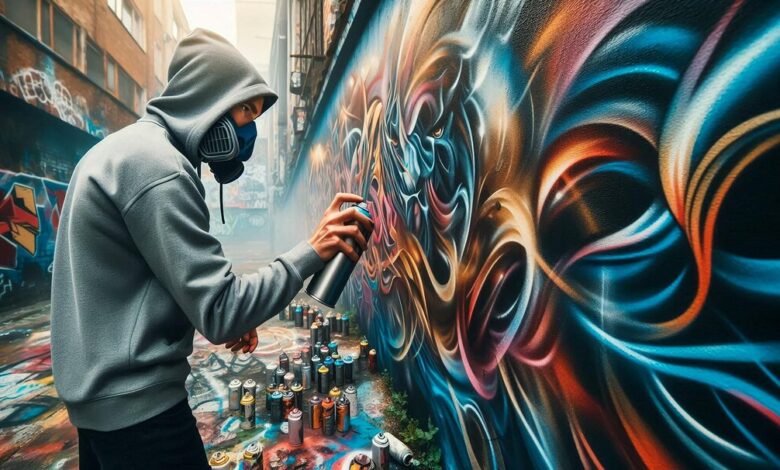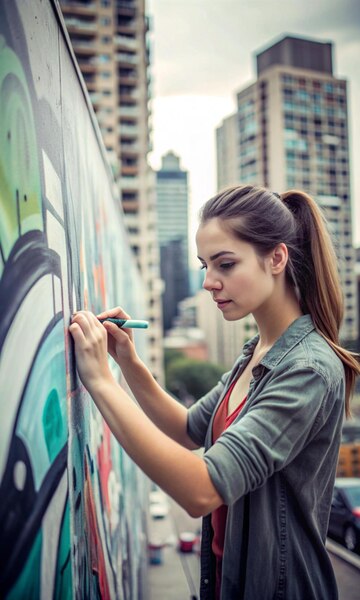Unleash Your Creativity: How to Start Your First Graffiti Art Drawing

Graffiti art has transformed from humble street beginnings to a celebrated form of urban expression. It’s vibrant, rebellious, and full of life, capturing the essence of the streets like no other art form. If you’ve always been fascinated by those colorful murals splashed across city walls and wondered how to start your first graffiti art drawing, you’re in the right place. This guide will walk you through everything you need to know to get started, from the basics of graffiti art to sharing your masterpieces with the world.
Introduction to Graffiti Art
Graffiti art has a rich and dynamic history, evolving from simple tags to complex murals that now grace galleries worldwide. Originating in the late 1960s and early 1970s in cities like New York and Philadelphia, graffiti began as a form of rebellion and self-expression among urban youth. These early graffiti artists used spray paint to leave their marks on subway cars and city buildings, quickly gaining attention for their bold and often illicit art form.
Over the decades, graffiti has gained recognition as a legitimate art form, with artists like Banksy, Shepard Fairey, and Jean-Michel Basquiat achieving international acclaim. Today, graffiti art continues to evolve, blending elements of traditional fine art with street culture, creating a unique and powerful visual language.
Getting Started
Before you can create your first graffiti masterpiece, you’ll need the right materials and tools. Here’s a list of essentials to get you started:
- Spray Paint: The backbone of graffiti art, spray paint comes in various colors and finishes. Brands like Montana, Molotow, and Krylon are popular choices among graffiti artists.
- Markers: For detailed work and outlines, high-quality markers are essential. Look for brands like Posca, Molotow, and Sharpie.
- Sketchbook: A good sketchbook is crucial for planning your designs and practicing techniques. Opt for one with thick, smooth paper that can handle different mediums.
- Protective Gear: Safety first! Wear a mask to avoid inhaling paint fumes, gloves to protect your hands, and old clothes that you don’t mind getting dirty.
Having the right tools will set you up for success and allow you to focus on developing your skills and style.
Understanding the Basics
Mastering the fundamental techniques of graffiti art is essential before moving on to more complex designs. Here are some basic techniques to practice:
- Tags: The simplest form of graffiti, tags are stylized signatures that graffiti artists use to mark their territory. Practice creating unique and legible tags that reflect your personal style.
- Throw-ups: These are more complex than tags, involving bubble letters or simple shapes filled with color. Throw-ups are quick to create and are often used for larger pieces.
- Pieces: Short for “masterpieces,” these are the most elaborate and time-consuming forms of graffiti. They involve intricate designs, multiple colors, and detailed shading.
By practicing these techniques, you’ll build a solid foundation that will allow you to tackle more advanced graffiti art projects.
Inspiration and Style Development
Finding inspiration and developing your unique style is a crucial part of becoming a successful graffiti artist. Here are some tips to help you along the way:
- Study Other Artists: Look at the work of established graffiti artists to understand different styles and techniques. Pay attention to how they use color, line, and composition.
- Experiment: Don’t be afraid to try new things and make mistakes. Experiment with different styles, colors, and techniques to find what resonates with you.
- Keep a Sketchbook: Use your sketchbook to jot down ideas, practice techniques, and plan your designs. Over time, you’ll see your style evolve and develop.
Remember, finding your unique style takes time and practice, so be patient and keep pushing yourself to grow as an artist.

Legal and Ethical Considerations
While graffiti art can be a powerful form of expression, it’s essential to respect public spaces and understand the legal implications of your work. Here are some key considerations:
- Get Permission: Always seek permission before painting on private property or public spaces. Many cities have legal graffiti walls or designated areas for street art.
- Respect Other Artists: Avoid painting over other artists’ work without permission. Respecting the work of others helps build a supportive and collaborative graffiti community.
- Stay Informed: Familiarize yourself with local laws and regulations regarding graffiti. Understanding the legal landscape will help you avoid potential legal issues.
By respecting the rules and other artists, you’ll contribute to a positive and thriving graffiti culture.
Safety Precautions
Creating graffiti art can be physically demanding and sometimes hazardous. Here are some safety guidelines to keep in mind:
- Wear Protective Gear: Always wear a mask to protect your lungs from paint fumes, gloves to protect your hands, and old clothes that you don’t mind getting dirty.
- Be Aware of Your Surroundings: When working in public spaces, be mindful of your surroundings and stay alert to potential hazards such as traffic or uneven surfaces.
- Work in Well-Ventilated Areas: Spray paint fumes can be harmful when inhaled in large quantities. Always work in well-ventilated areas to minimize exposure.
Following these safety precautions will help ensure that your graffiti art experience is safe and enjoyable.
Showcasing Your Work
Once you’ve created your graffiti masterpiece, it’s time to share it with the world. Here are some tips for showcasing your work:
- Social Media: Platforms like Instagram and Facebook are great for sharing your graffiti art with a broader audience. Use relevant hashtags and engage with other artists to build your following.
- Art Shows and Galleries: Many galleries and art shows now feature graffiti art. Submit your work to local exhibitions or organize your own show to gain exposure.
- Collaborate with Other Artists: Collaborating with other artists can help you reach new audiences and develop your skills. Look for opportunities to work with other graffiti artists in your area.
Sharing your work will help you connect with other artists and art enthusiasts, building a supportive community around your art.
Conclusion
Starting your first graffiti art drawing can be both exciting and challenging. By understanding the basics, finding your unique style, and respecting the rules of the graffiti community, you’ll be well on your way to creating stunning graffiti art. Remember to stay safe, have fun, and keep pushing your creative boundaries.
For more tips, resources, and support, consider joining our graffiti art community. Connect with fellow artists, share your work, and gain access to exclusive content that will help you grow as a graffiti artist. Happy painting!



